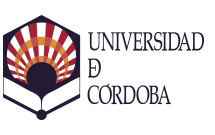Iconografía del perro en el Mediterráneo Oriental durante la Edad del Bronce Final y el Hierro
Iconography of the dog in the Eastern Mediterranean during the Late Bronze Age and Iron Age.
Autor
Bustamante Valderrama, África
Editor
UCOPressFecha
2022Materia
PerroArte
Cerámica
Pinturas
Glíptica
Mediterráneo Oriental
Bronce Final
Edad del Hierro
Dog
Art
Pottery
Paintings
Glyptic
Eastern Mediterranean
Late Bronze Age
Iron Age
METS:
Mostrar el registro METSPREMIS:
Mostrar el registro PREMISMetadatos
Mostrar el registro completo del ítemResumen
Este trabajo contempla la diversidad iconográfica del perro en el marco espacio temporal que comprende el Mediterráneo Oriental a finales del Bronce y el Hierro. A través del estudio de los soportes y lo que en ellos se representa, intentaremos comprender las distintas funciones que conllevaría dicha representación iconográfica según el contexto en el que se encuentre y cómo se ilustre. Mediante una selección bibliográfica veremos las distintas tipologías en las que aparecen los cánidos, además de observar las transformaciones morfológicas que ha ido sufriendo esta especie en su convivencia con el ser humano. Esto responde a las necesidades que la humanidad requería en cada momento ya sea como compañero de caza, animal protector o muchas otras funciones reflejadas en las mitologías. This work contemplates the iconographic diversity of the dog in both a spatial and temporal framework, including the Eastern Mediterranean at the Late Bronze Age and Iron Age. Through the study of diverse media and what is depicted in them, we will aim to understand the different functions that the iconographic representation served, depending on the context and how it was illustrated. With the help of selected bibliography, we will navigate the different categorisations in which the canines appear as well as the morphological transformations that them have undergone during its coexistence with the human being. A result from the influence of the needs of mankind in a specific moment from a hunting companion to a means for protection or any other functions reflected in mythologies.

